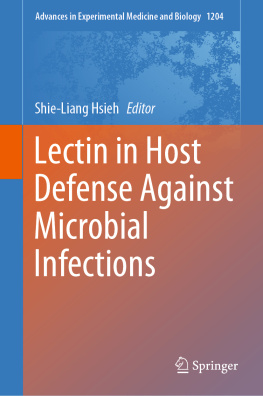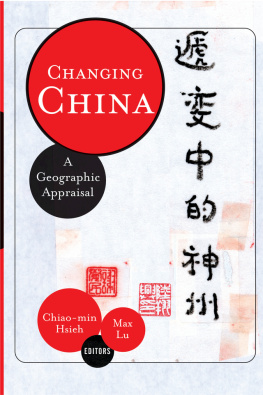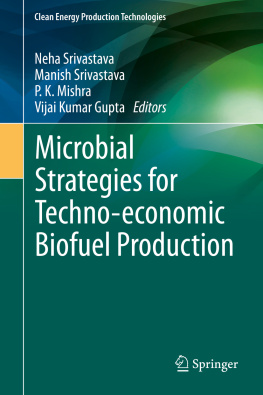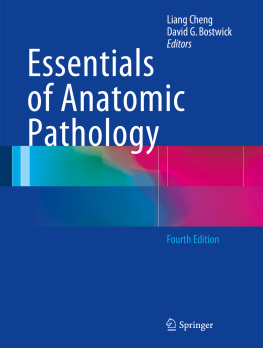Shie-Liang Hsieh - Lectin in Host Defense Against Microbial Infections
Here you can read online Shie-Liang Hsieh - Lectin in Host Defense Against Microbial Infections full text of the book (entire story) in english for free. Download pdf and epub, get meaning, cover and reviews about this ebook. year: 2020, publisher: Springer Singapore, genre: Romance novel. Description of the work, (preface) as well as reviews are available. Best literature library LitArk.com created for fans of good reading and offers a wide selection of genres:
Romance novel
Science fiction
Adventure
Detective
Science
History
Home and family
Prose
Art
Politics
Computer
Non-fiction
Religion
Business
Children
Humor
Choose a favorite category and find really read worthwhile books. Enjoy immersion in the world of imagination, feel the emotions of the characters or learn something new for yourself, make an fascinating discovery.
- Book:Lectin in Host Defense Against Microbial Infections
- Author:
- Publisher:Springer Singapore
- Genre:
- Year:2020
- Rating:4 / 5
- Favourites:Add to favourites
- Your mark:
- 80
- 1
- 2
- 3
- 4
- 5
Lectin in Host Defense Against Microbial Infections: summary, description and annotation
We offer to read an annotation, description, summary or preface (depends on what the author of the book "Lectin in Host Defense Against Microbial Infections" wrote himself). If you haven't found the necessary information about the book — write in the comments, we will try to find it.
Lectin in Host Defense Against Microbial Infections — read online for free the complete book (whole text) full work
Below is the text of the book, divided by pages. System saving the place of the last page read, allows you to conveniently read the book "Lectin in Host Defense Against Microbial Infections" online for free, without having to search again every time where you left off. Put a bookmark, and you can go to the page where you finished reading at any time.
Font size:
Interval:
Bookmark:
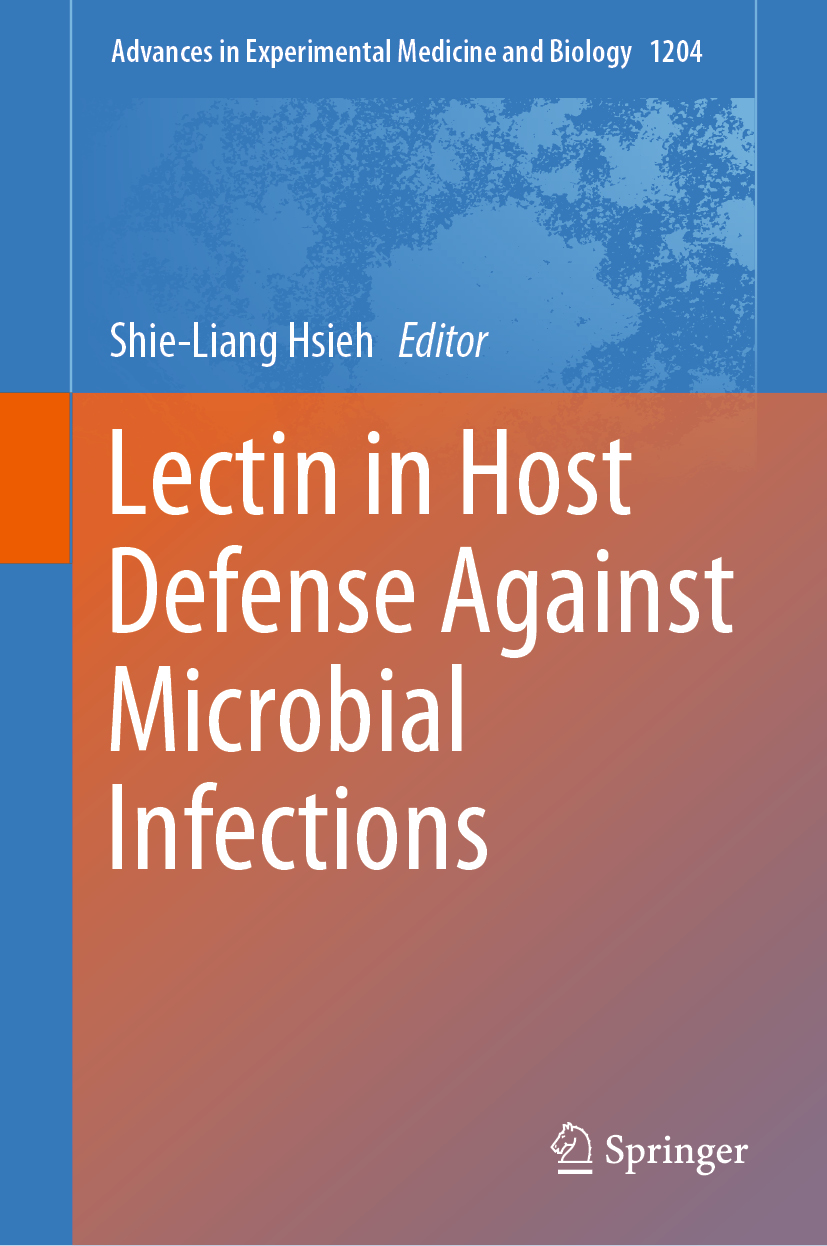
Advances in Experimental Medicine and Biologyprovides a platform for scientific contributions in the main disciplines of the biomedicine and the life sciences. This series publishes thematic volumes on contemporary research in the areas of microbiology, immunology, neurosciences, biochemistry, biomedical engineering, genetics, physiology, and cancer research. Covering emerging topics and techniques in basic and clinical science, it brings together clinicians and researchers from various fields.
Advances in Experimental Medicine and Biologyhas been publishing exceptional works in the field for over 40 years, and is indexed in SCOPUS, Medline (PubMed), Journal Citation Reports/Science Edition, Science Citation Index Expanded (SciSearch, Web of Science), EMBASE, BIOSIS, Reaxys, EMBiology, the Chemical Abstracts Service (CAS), and Pathway Studio.
2018 Impact Factor: 2.126.
More information about this series at http://www.springer.com/series/5584

This Springer imprint is published by the registered company Springer Nature Singapore Pte Ltd.
The registered company address is: 152 Beach Road, #21-01/04 Gateway East, Singapore 189721, Singapore
Lectin proteins recognise carbohydrate structures and those derived from plant sources such as ricin, wheat germ agglutinin and Concanavilin A have been of interest to immunologists for some time. More recently, lectin-like molecules in mammalian species have become widely studied as mediators of cellular recognition and responses such as adhesion, phagocytosis and cytotoxicity. They contribute to hostpathogen interactions, both invasion and evasion strategies, providing clues to ongoing evolution. Their ability to discriminate self from non-and modified self has been of perennial interest to immunologists. In combination with other membrane molecules, they contribute to homeostasis, inflammation and repair, with special reference to innate, acquired and autoimmunity; lectin receptors and potential ligands are expressed by all haematopoietic cells on the plasma membrane for extracellular recognition, and in cytoplasm during membrane glycoprotein and glycolipid biosynthesis and processing. The discipline of Glycobiology has grown enormously with technical advances in glycomic and structural analysis, facilitated by immunochemical tools such as monoclonal antibodies and contemporary genomics, cell biology and in vivo gene manipulation.
The present volume edited by Shie-Liang Edmond Hsieh from the Academia Sinica in the Republic of China (Taiwan) fulfils an unmet need in focussing on an important subgroup of receptors with canonical C-Type Lectin (CLEC) domains. The field of glycobiology research has flourished in Taiwan, with the return to Chang Gung University of Albert M Wu, a collaborator of Elvin Kabat at Columbia University in New York, and Chi-Huey Wong who was the founder director of the Genomics Research Center and President of Academia Sinica, which is the most prestigious research institute in Taiwan, from the development of a major research centre in Life Sciences at the Academia Sinica in Taipei. Shie-Liang Hsieh received his medical education at the National Yang-Ming University, and a doctorate in Biochemistry in Porters laboratory at Oxford. After postdoctoral studies with Hugh McDevitt at Stanford, he became a professor at National Yang-Ming University (from 19932003) and a Distinguished Research Fellow (from 2013 to the present) at the Academia Sinica, with broad research interests in Glycoimmunology, hostpathogen interactions and cancer immunology. He has published extensively on the role of glycan recognition in Dengue and other viral infections, by CLEC5A, and on a Decoy receptor 3 with pleiotropic roles in immunomodulation and immunopathology. In addition to several Taiwanese colleagues, notably Fu-Tong Liu, a galectin specialist, has established close ties with scientists in China, Japan, the UK and USA, as is evident from the list of contributors to the present volume.
ChapterC-type lectin receptors (CLRs) in antifungal immunity, GD Brown, Aberdeen University
After a broad introductory summary of CLRs in innate and adaptive immunity, 4 fungal infectionsCandida albicans, Aspergillus fumigatus, Cryptococcus neoformans and Pneumocystis jiravecii are discussed, dealing with fungal wall composition, receptorligand interactions and signalling pathways. Innate receptors implicated in microbial recognition include CLRs, Toll-, RIGI- and NOD-like Receptors, as well as Collectins. The authors describe a novel melanin sensing receptor, MelLec. They review CLR structure, phylogeny and expression on myeloid cells. Signalling, direct or via the FcR gamma chain, induces a range of effector responses. Activatory or Inhibitory ITAM or ITIM motifs initiate kinase and phosphatase activation, respectively.
ChapterImmune recognition of pathogen-derived glycolipids through Mincle, Y Miyake, Saga University, Japan
Ligands for Mincle include pathogen glycolipids and trehalose dimycolate (TDM) induced activation or inhibition depends on the setting. The Mincle receptor gene cluster includes Dectin-2, MCL, a Mincle partner and DCAR. The role of Mincle in Mycobacterial, Klebsiella and Strep pneumonia infections is considered in detail. Leishmania major releases soluble Mincle ligand, a possible evasion mechanism. Sterile ligands include damaged cells and cholesterol crystals. Mycobacterial adjuvant may enhance vaccine efficacy, especially in early life.
Font size:
Interval:
Bookmark:
Similar books «Lectin in Host Defense Against Microbial Infections»
Look at similar books to Lectin in Host Defense Against Microbial Infections. We have selected literature similar in name and meaning in the hope of providing readers with more options to find new, interesting, not yet read works.
Discussion, reviews of the book Lectin in Host Defense Against Microbial Infections and just readers' own opinions. Leave your comments, write what you think about the work, its meaning or the main characters. Specify what exactly you liked and what you didn't like, and why you think so.

